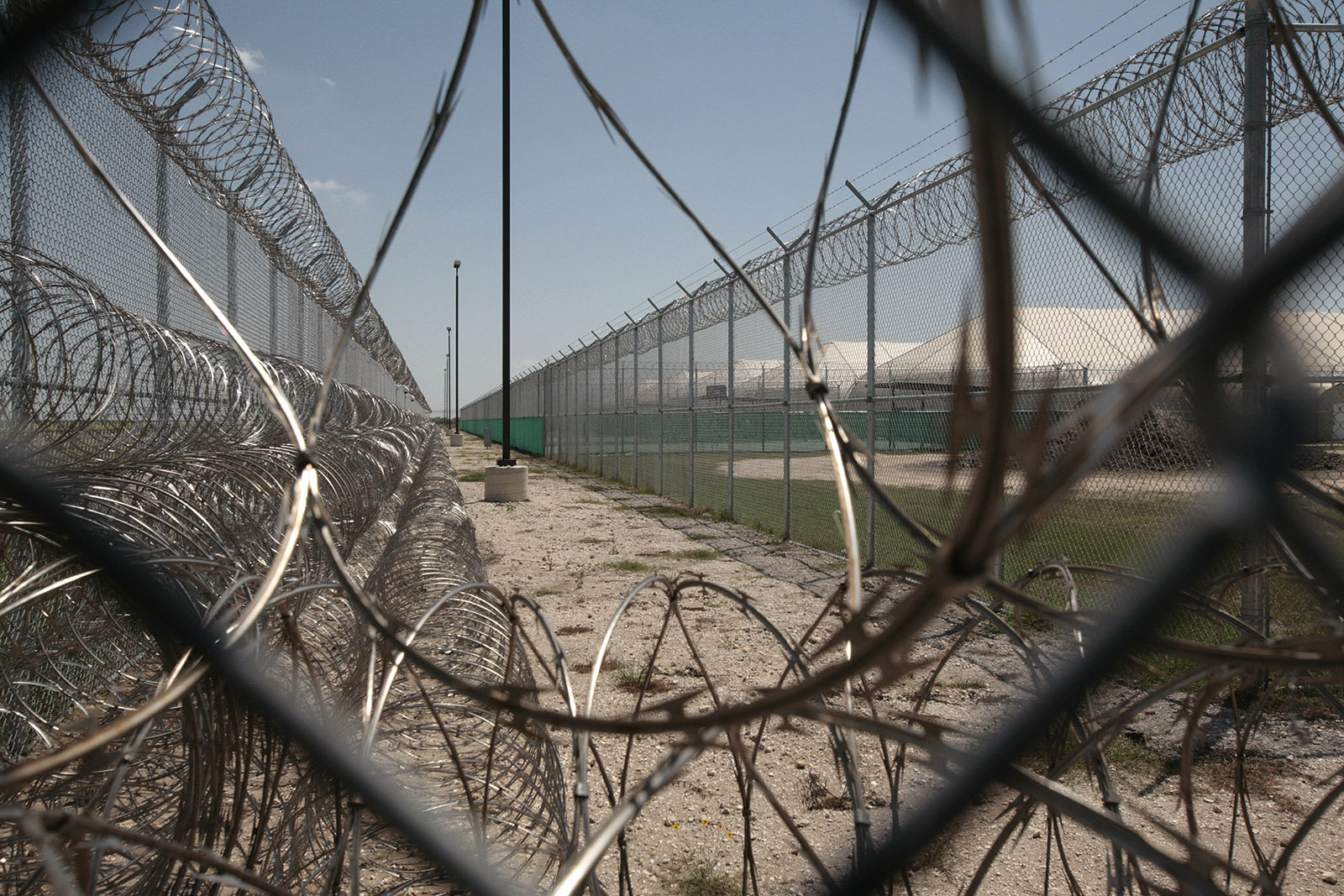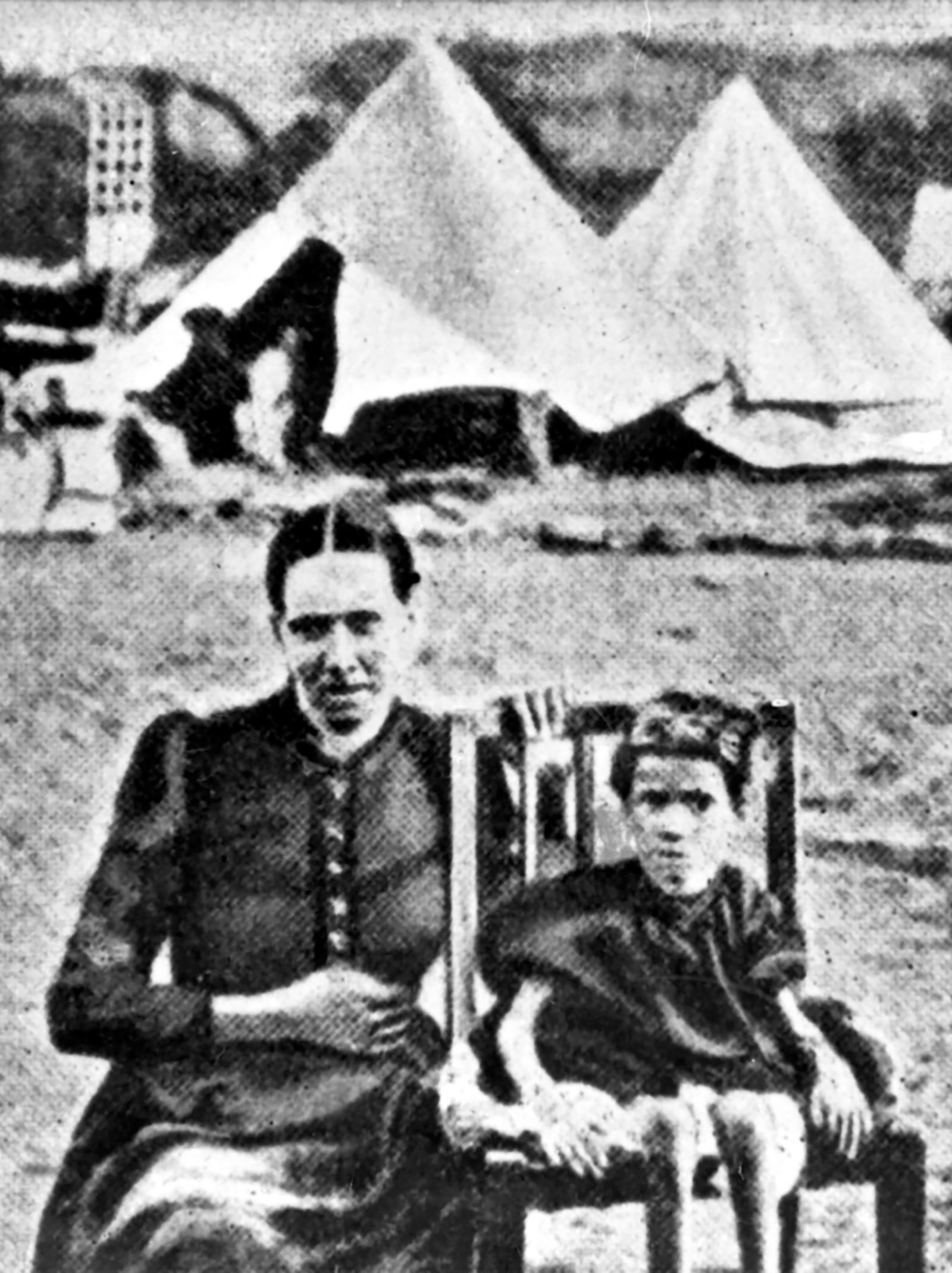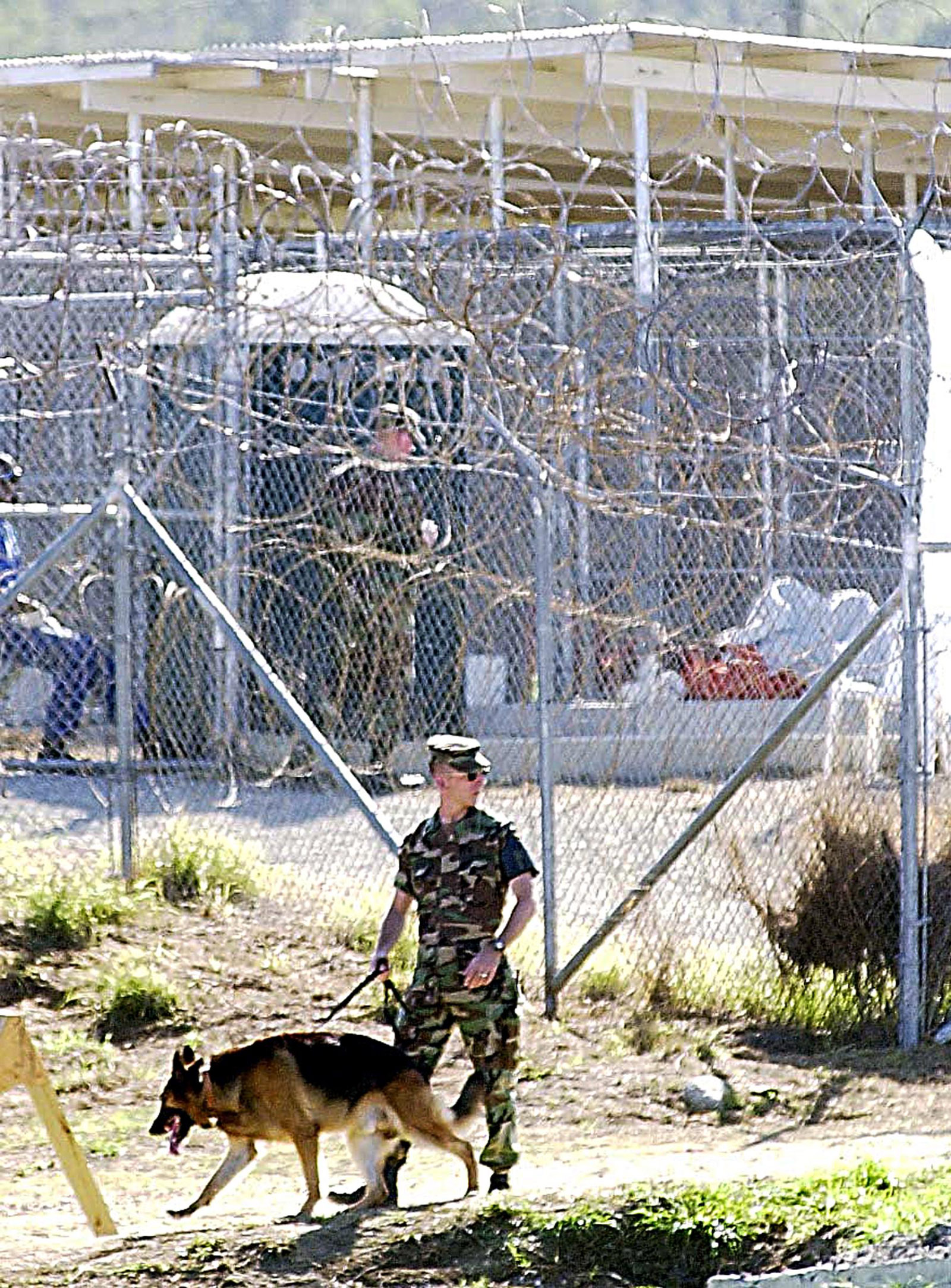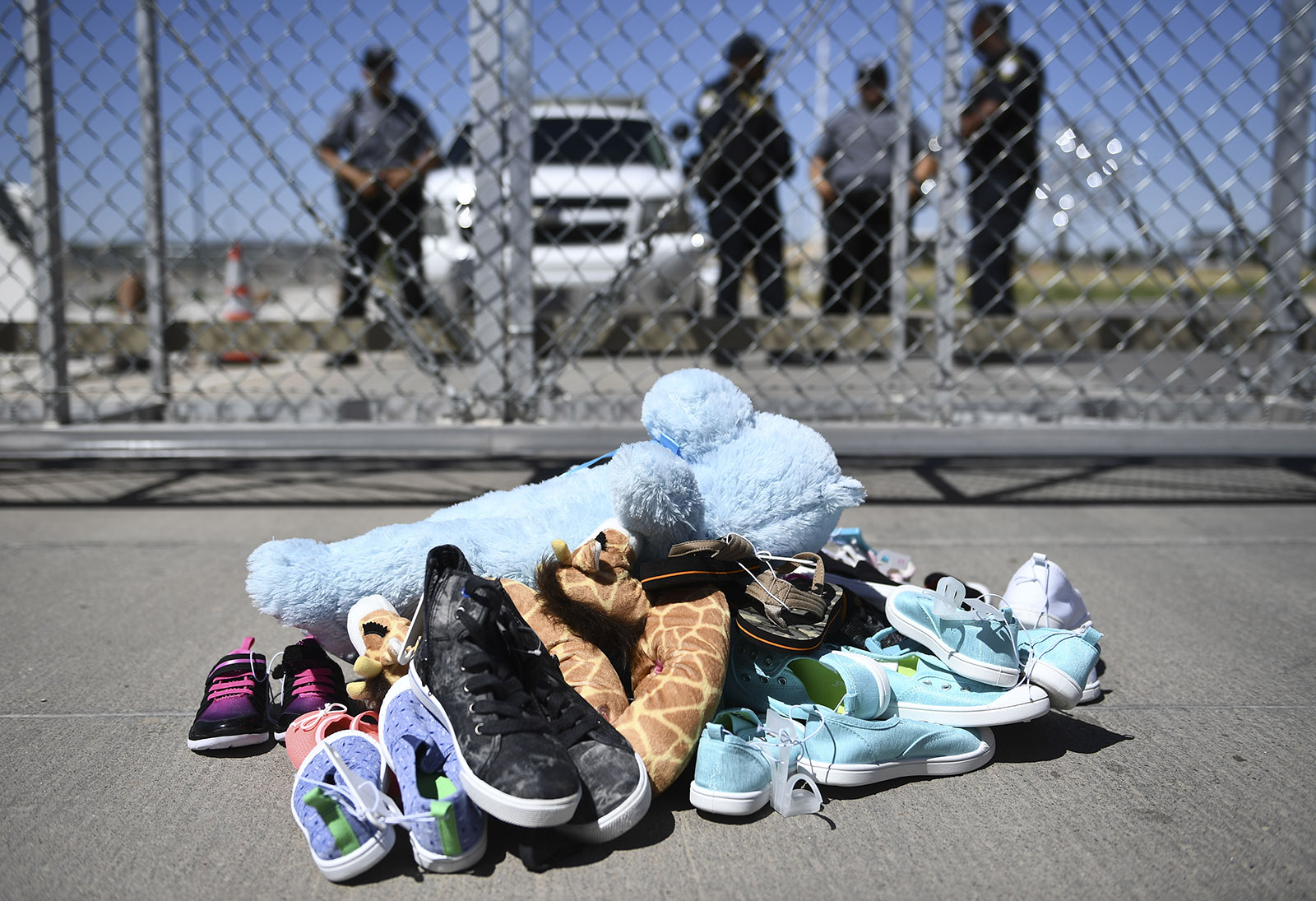On Monday, New York Congresswoman Alexandria Ocasio-Cortez referred to US border detention facilities as “concentration camps,” spurring a backlash in which critics accused her of demeaning the memory of those who died in the Holocaust. Debates raged over a label for what is happening along the southern border and grew louder as the week rolled on. But even this back-and-forth over naming the camps has been a recurrent feature in the mass detention of civilians ever since its inception, a history that long predates the Holocaust.
At the heart of such policy is a question: What does a country owe desperate people whom it does not consider to be its citizens? The twentieth century posed this question to the world just as the shadow of global conflict threatened for the second time in less than three decades. The dominant response was silence, and the doctrine of absolute national sovereignty meant that what a state did to people under its control, within its borders, was nobody else’s business. After the harrowing toll of the Holocaust with the murder of millions, the world revisited its answer, deciding that perhaps something was owed to those in mortal danger. From the Fourth Geneva Convention protecting civilians in 1949 to the 1989 Convention on the Rights of the Child, the international community established humanitarian obligations toward the most vulnerable that apply, at least in theory, to all nations.
The twenty-first century is unraveling that response. Countries are rejecting existing obligations and meeting asylum seekers with walls and fences, from detainees fleeing persecution who were sent by Australia to third-party detention in the brutal offshore camps of Manus and Nauru to razor-wire barriers blocking Syrian refugees from entering Hungary. While some nations, such as Germany, wrestle with how to integrate refugees into their labor force—more and more have become resistant to letting them in at all. The latest location of this unwinding is along the southern border of the United States.
So far, American citizens have gotten only glimpses of the conditions in the border camps that have been opened in their name. In the month of May, Customs and Border Protection reported a total of 132,887 migrants who were apprehended or turned themselves in between ports of entry along the southwest border, an increase of 34 percent from April alone. Upon apprehension, these migrants are temporarily detained by Border Patrol, and once their claims are processed, they are either released or handed over to ICE for longer-term detention. Yet Border Patrol itself is currently holding about 15,000 people, nearly four times what government officials consider to be this enforcement arm’s detention capacity.
On June 12, the Department of Health and Human Services announced that Fort Sill, an Army post that hosted a World War II internment camp for detainees of Japanese descent, will now be repurposed to detain migrant children. In total, HHS reports that it is currently holding some 12,000 minors. Current law limits detention of minors to twenty days, though Senator Lindsey Graham has proposed expanding the court-ordered limit to 100 days. Since the post is on federal land, it will be exempt from state child welfare inspections.
In addition to the total of detainees held by Border Patrol, an even higher number is detained at centers around the country by the Immigration and Customs Enforcement agency: on a typical day at the beginning of this month, ICE was detaining more than 52,500 migrants. The family separation policy outraged the public in the 2018, but despite legal challenges, it never fully ended. Less publicized have been the deaths of twenty-four adults in ICE custody since the beginning of the Trump administration; in addition, six children between the ages of two and sixteen have died in federal custody over the last several months. It’s not clear whether there have been other deaths that have gone unreported.
Conditions for detainees have not been improving. At the end of May, a Department of Homeland Security inspector general found nearly 900 migrants at a Texas shelter built for a capacity of 125 people. On June 11, a university professor spotted at least 100 men behind chain-link fences near the Paso del Norte Bridge in El Paso, Texas. Those detainees reported sitting outside for weeks in temperatures that soared above 100 degrees. Taylor Levy, an El Paso immigration lawyer, described going into one facility and finding “a suicidal four-year-old whose face was covered in bloody, self-inflicted scratches… Another young child had to be restrained by his mother because he kept running full-speed into metal lockers. He was covered in bruises.”
If deciding what to do about the growing numbers of adults and children seeking refuge in the US relies on complex humanitarian policies and international laws, in which most Americans don’t take a deep interest, a simpler question also presents itself: What exactly are these camps that the Trump administration has opened, and where is this program of mass detention headed?
Advertisement
Even with incomplete information about what’s happening along the border today and what the government plans for these camps, history points to some conclusions about their future. Mass detention without trial earned a new name and a specific identity at the end of the nineteenth century. The labels then adopted for the practice were “reconcentración” and “concentration camps”—places of forced relocation of civilians into detention on the basis of group identity.
Other kinds of group detention had appeared much earlier in North American history. The US government drove Native Americans from their homelands into prescribed exile, with death and detention in transit camps along the way. Some Spanish mission systems in the Americas had accomplished similar ends by seizing land and pressing indigenous people into forced labor. During the 245 years when slavery was legal in the US, detention was one of its essential features.
Concentration camps, however, don’t typically result from the theft of land, as happened with Native Americans, or owning human beings in a system of forced labor, as in the slave trade. Exile, theft, and forced labor can come later, but in the beginning, detention itself is usually the point of concentration camps. By the end of the nineteenth century, the mass production of barbed wire and machines guns made this kind of detention possible and practical in ways it never had been before.
Under Spanish rule in 1896, the governor-general of Cuba instituted camps in order to clear rebel-held regions during an uprising, despite his predecessor’s written refusal “as the representative of a civilized nation, to be the first to give the example of cruelty and intransigence” that such detention would represent. After women and children began dying in vast numbers behind barbed wire because there had been little planning for shelter and even less for food, US President William McKinley made his call to war before Congress. He spoke against the policy of reconcentración, calling it warfare by uncivilized means. “It was extermination,” McKinley said. “The only peace it could beget was that of the wilderness and the grave.” Without full records, the Cuban death toll can only be estimated, but a consensus puts it in the neighborhood of 150,000, more than 10 percent of the island’s prewar population.
Today, we remember the sinking of the USS Maine as the spark that ignited the Spanish-American War. But war correspondent George Kennan (cousin of the more famous diplomat) believed that “it was the suffering of the reconcentrados, more, perhaps, than any other one thing that brought about the intervention of the United States.” On April 25, 1898, Congress declared war. Two weeks later, US Marines landed at Fisherman’s Point on the windward side of the entrance to Guantánamo Bay in Cuba. After a grim, week-long fight, the Marines took the hill. It became a naval base, and the United States has never left that patch of land.
As part of the larger victory, the US inherited the Philippines. The world’s newest imperial power also inherited a rebellion. Following a massacre of American troops at Balangiga in September 1901, during the third year of the conflict, the US established its own concentration camp system. Detainees, mostly women and children, were forced into squalid conditions that one American soldier described in a letter to a US senator as “some suburb of hell.” In the space of only four months, more than 11,000 Filipinos are believed to have died in these noxious camps.
Meanwhile, in southern Africa in 1900, the British had opened their own camps during their battle with descendants of Dutch settlers in the second Boer War. British soldiers filled tent cities with Boer women and children, and the military authorities called them refugee camps. Future Prime Minister David Lloyd George took offense at that name, noting in Parliament: “There is no greater delusion in the mind of any man than to apply the term ‘refugee’ to these camps. They are not refugee camps. They are camps of concentration.” Contemporary observers compared them to the Cuban camps, and criticized their deliberate cruelty. The Bishop of Hereford wrote to The Times of London in 1901, asking: “Are we reduced to such a depth of impotence that our Government can do nothing to stop such a holocaust of child-life?”
Maggoty meat rations and polluted water supplies joined outbreaks of contagious diseases amid crowded and unhealthy conditions in the Boer camps. More than 27,000 detainees are thought to have died there, nearly 80 percent of them children. The British had opened camps for black Africans as well, in which at least 14,000 detainees died—the real number is probably much higher. Aside from protests made by some missionaries, the deaths of indigenous black Africans did not inspire much public outrage. Much of the history of the suffering in these camps has been lost.
Advertisement
These early experiments with concentration camps took place on the periphery of imperial power, but accounts of them nevertheless made their way into newspapers and reports in many nations. As a result, the very idea of them came to be seen as barbaric. By the end of the first decade of the twentieth century, the first camp systems had all been closed, and concentration camps had nearly vanished as an institution. Within months of the outbreak of World War I, though, they would be resurrected—this time rising not at the margins but in the centers of power. Between 1914 and 1918, camps were constructed on an unprecedented scale across six continents. In their time, these camps were commonly called concentration camps, though today they are often referred to by the more anodyne term “internment.”
Those World War I detainees were, for the most part, foreigners—or, in legalese, aliens—and recent anti-immigration legislation in several countries had deliberately limited their rights. The Daily Mail denounced aliens left at liberty once they had registered with their local police department, demanding, “Does signing his name take the malice out of a man?” The Scottish Field was more direct, asking, “Do Germans have souls?” That these civilian detainees were no threat to Britain did not keep them from being demonized, shouted at, and spat upon as they were paraded past hostile crowds in cities like London.
Though a small number of people were shot in riots in these camps, and hunger became a serious issue as the conflict dragged on, World War I internment would present a new, non-lethal face for the camps, normalizing detention. Even after the war, new camps sprang up from Spain to Hungary and Cuba, providing an improvised “solution” for everything from vagrancy to anxieties over the presence of Jewish foreigners.
Some of these camps were clearly not safe for those interned. Local camps appeared in Tulsa, Oklahoma, in 1921, after a white mob burned down a black neighborhood and detained African-American survivors. In Bolshevik Russia, the first concentration camps preceded the formation of the Soviet Union in 1922 and planted seeds for the brutal Gulag system that became official near the end of the USSR’s first decade. While some kinds of camps were understood to be harsher, after World War I their proliferation did not initially disturb public opinion. They had yet to take on their worst incarnations.
In 1933, barely more than a month after Hitler was appointed chancellor, the Nazis’ first, impromptu camp opened in the town of Nohra in central Germany to hold political opponents. Detainees at Nohra were allowed to vote at a local precinct in the elections of March 5, 1933, resulting in a surge of Communist ballots in the tiny town. Locking up groups of civilians without trial had become accepted. Only the later realization of the horrors of the Nazi death camps would break the default assumption by governments and the public that concentration camps could and should be a simple way to manage populations seen as a threat.
However, the staggering death toll of the Nazi extermination camp system—which was created mid-war and stood almost entirely separate from the concentration camps in existence since 1933—led to another result: a strange kind of erasure. In the decades that followed World War II, the term “concentration camp” came to stand only for Auschwitz and other extermination camps. It was no longer applied to the kind of extrajudicial detention it had denoted for generations. The many earlier camps that had made the rise of Auschwitz possible largely vanished from public memory.
It is not necessary, however, to step back a full century in American history to find camps with links to what is happening on the US border today. Detention at Guantánamo began in the 1990s, when Haitian and Cuban immigrants whom the government wanted to keep out of the United States were housed there in waves over a four-year period—years before the “war on terror” and the US policy of rendition of suspected “enemy combatants” made Camps Delta, X-Ray, and Echo notorious. Tens of thousands of Haitians fleeing instability at home were picked up at sea and diverted to the Cuban base, to limit their legal right to apply for asylum. The court cases and battles over the suffering of those detainees ended up setting the stage for what Guantánamo would become after September 11, 2001.
In one case, a federal court ruled that it did have jurisdiction over the base, but the government agreed to release the Haitians who were part of the lawsuit in exchange for keeping that ruling off the books. A ruling in a second case would assert that the courts did not have jurisdiction. Absent the prior case, the latter stood on its own as precedent. Leaving Guantánamo in this gray area made it an ideal site for extrajudicial detention and torture after the twin towers fell.
This process of normalization, when a bad camp becomes much more dangerous, is not unusual. Today’s border camps are a crueler reflection of long-term policies—some challenged in court—that earlier presidents had enacted. Prior administrations own a share of the responsibility for today’s harsh practices, but the policies in place today are also accompanied by a shameless willingness to publicly target a vulnerable population in increasingly dangerous ways.
I visited Guantánamo twice in 2015, sitting in the courtroom for pretrial hearings and touring the medical facility, the library, and all the old abandoned detention sites, as well as newly built ones, open to the media—from the kennel-style cages of Camp X-Ray rotting to ruin in the damp heat to the modern jailhouse facilities of Camp 6. Seeing all this in person made clear to me how vast the architecture of detention had become, how entrenched it was, and how hard it would be to close.
Without a significant government effort to reverse direction, conditions in every camp system tend to deteriorate over time. Governments rarely make that kind of effort on behalf of people they are willing to lock up without trial in the first place. And history shows that legislatures do not close camps against the will of an executive.
Just a few years ago there might have been more potential for change spurred by the judicial branch of our democracy, but this Supreme Court is inclined toward deference to executive power, even, it appears, if that power is abused. It seems unlikely this Court will intervene to end the new border camp system; indeed, the justices are far more likely to institutionalize it by half-measures, as happened with Guantánamo. The Korematsu case, in which the Supreme Court upheld Japanese-American internment (a ruling only rescinded last year), relied on the suppression of evidence by the solicitor general. Americans today can have little confidence that this administration would behave any more scrupulously when defending its detention policy.
What kind of conditions can we expect to develop in these border camps? The longer a camp system stays open, the more likely it is that vital things will go wrong: detainees will contract contagious diseases and suffer from malnutrition and mental illness. We have already seen that current detention practices have resulted in children and adults succumbing to influenza, staph infections, and sepsis. The US is now poised to inflict harm on tens of thousands more, perhaps hundreds of thousands more.
Along with such inevitable consequences, every significant camp system has introduced new horrors of its own, crises that were unforeseen when that system was opened. We have yet to discover what those will be for these American border camps. But they will happen. Every country thinks it can do detention better when it starts these projects. But no good way to conduct mass indefinite detention has yet been devised; the system always degrades.
When, in 1940, Margarete Buber-Neumann was transferred from the Soviet Gulag at Karaganda to the camp for women at Ravensbrück (in an exchange enabled by the Nazi–Soviet Pact), she came from near-starvation conditions in the USSR and was amazed at the cleanliness and order of the Nazi camp. New arrivals were issued clothing, bedding, and silverware, and given fresh porridge, fruit, sausage, and jam to eat. Although the Nazi camps were already punitive, order-obsessed monstrosities, the wartime overcrowding that would soon overtake them had not yet made daily life a thing of constant suffering and squalor. The death camps were still two years away.
The United States now has a vast and growing camp system. It is starting out with gruesome overcrowding and inadequate healthcare, and because of budget restrictions, has already taken steps to cut services to juvenile detainees. The US Office of Refugee Resettlement says that the mounting number of children arriving unaccompanied is forcing it to use military bases and other sites that it prefers to avoid, and that establishing these camps is a temporary measure. But without oversight from state child welfare inspectors, the possibilities for neglect and abuse are alarming. And without any knowledge of how many asylum-seekers are coming in the future, federal administrators are likely to find themselves boxed in to managing detention on military sites permanently.
President Trump and senior White House adviser Stephen Miller appear to have purged the Department of Homeland Security of most internal opposition to their anti-immigrant policies. In doing so, that have removed even those sympathetic to the general approach taken by the White House, such as former Chief of Staff John Kelly and former Homeland Security Secretary Kirstjen Nielsen, in order to escalate the militarization of the border and expand irregular detention in more systematic and punitive ways. This kind of power struggle or purge in the early years of a camp system is typical.
The disbanding of the Cheka, the Soviet secret police, in February 1922 and the transfer of its commander, Felix Dzerzhinsky, to head up an agency with control over only two prisons offered a hint of an alternate future in which extrajudicial detention would not play a central role in the fledgling Soviet republic. But Dzerzhinsky managed to keep control over the “special camps” in his new position, paving the way for the emergence of a camp-centered police state. In pre-war Germany in the mid-1930s, Himmler’s struggle to consolidate power from rivals eventually led him to make camps central to Nazi strategy. When the hardliners win, as they appear to have in the US, conditions tend to worsen significantly.
Is it possible this growth in the camp system will be temporary and the improvised border camps will soon close? In theory, yes. But the longer they remain open, the less likely they are to vanish. When I visited the camps for Rohingya Muslims a year before the large-scale campaign of ethnic cleansing began, many observers appeared to be confusing the possible and the probable. It was possible that the party of Nobel Peace Prize winner Aung San Suu Kyi would sweep into office in free elections and begin making changes. It was possible that full democracy would come to all the residents of Myanmar, even though the government had stripped the Rohingya of the last vestiges of their citizenship. These hopes proved to be misplaced. Once there are concentration camps, it is always probable that things will get worse.
The Philippines, Japanese-American internment, Guantánamo… we can consider the fine points of how the current border camps evoke past US systems, and we can see how the arc of camp history reveals the likelihood that the suffering we’re currently inflicting will be multiplied exponentially. But we can also simply look at what we’re doing right now, shoving bodies into “dog pound”-style detention pens, “iceboxes,” and standing room-only spaces. We can look at young children in custody who have become suicidal. How much more historical awareness do we really need?







